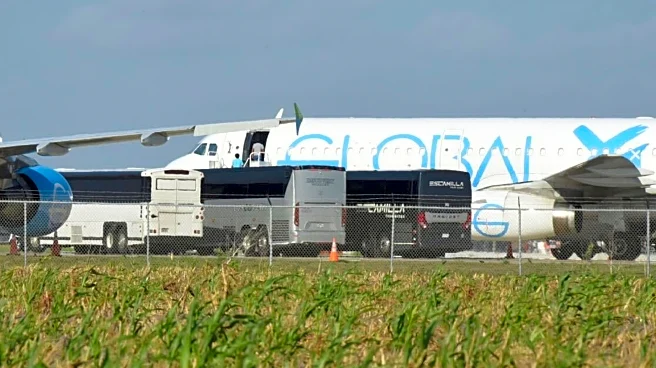By Dan Catchpole
(Reuters) -Boeing Defense said Wednesday it would consider "minor adjustments" to its last contract offer to roughly 3,200 union members on strike in the St. Louis area, where it produces fighter jets and munitions.
"The economics of our deal will remain the same," Dan Gillian, one of Boeing Defense's top executives in St. Louis, told reporters on a conference call.
Members of the International Association of Machinists and Aerospace Workers' District 837 rejected the offer on August
3. They went on strike the next day.
Both sides say they are open to talks, but there is no schedule to resume negotiations.
"Our members continue to stand strong in hopes of a contract that addresses their needs," District 837 president Tom Boelling told Reuters.
Boeing has kept production going with contingency plans, but "certainly production has slowed in areas because of the strike," Gillian said, noting that output has not fallen for its Joint Direct Attack Munitions (JDAM).
"If you're here in Saint Louis, fighter jets are still flying. We're delivering jets to our customers," he added.
In addition to the JDAM, Boeing produces its F-15 and F/A-18 fighters, the T-7 military trainer, and wing sections for the company's commercial 777X jet in St. Louis.
Boeing's defense division has invested billions of dollars to expand manufacturing facilities and engineering capabilities in the St. Louis area for the new U.S. Air Force fighter jet, the F-47A. It won the contract this year.
The company is also competing to win the contract for the U.S. Navy's new fighter program, the F/A-XX. The striking machinists are "the core that will help us do all of that," Gillian said.
Boeing is launching an apprenticeship program to add machinists, and "the team will continue to grow," he said.
The offer rejected by St. Louis-area workers included a 20% general wage increase, faster wage progression, a $5,000 ratification bonus and more vacation time and sick leave. Boeing withdrew the bonus after the offer was rejected.
The average compensation increase for union members would be 40% over the contract's duration, "with some workers potentially seeing up to 60% growth over four years," Gillian said.
The offer should not be compared to the contract accepted last fall by members of IAM District 751 in Washington and Oregon to end a seven-week strike, he said, noting that "the cost of living between Seattle and Saint Louis is just very different, but more importantly, more material to this negotiation, IAM 751 hadn't had a new contract in 10 years."
Striking St. Louis workers can ask for a personalized statement showing how the contract would affect their compensation. However, only 10% of District 837 members have asked for one so far, Gillian said.
Some union members have crossed the picket line, but he declined to say how many.
(Reporting by Dan Catchpole in Seattle; Editing by David Gregorio)














